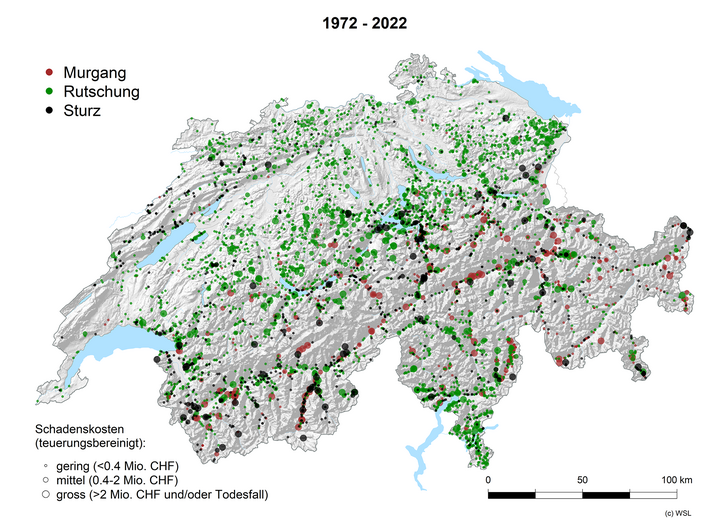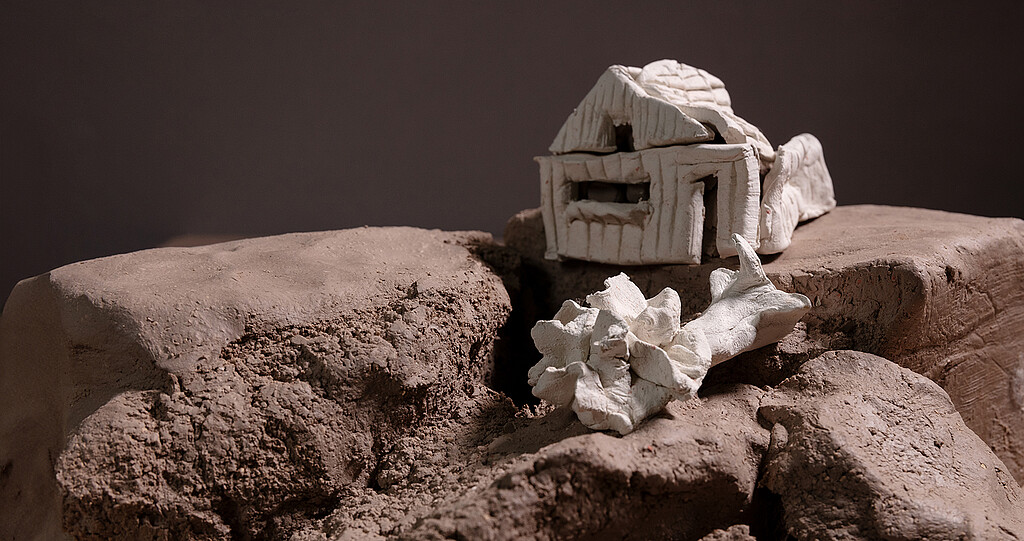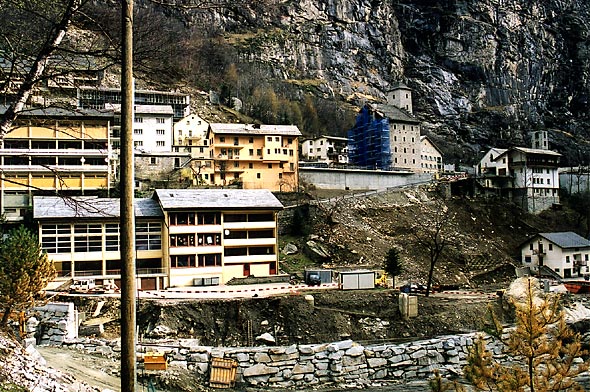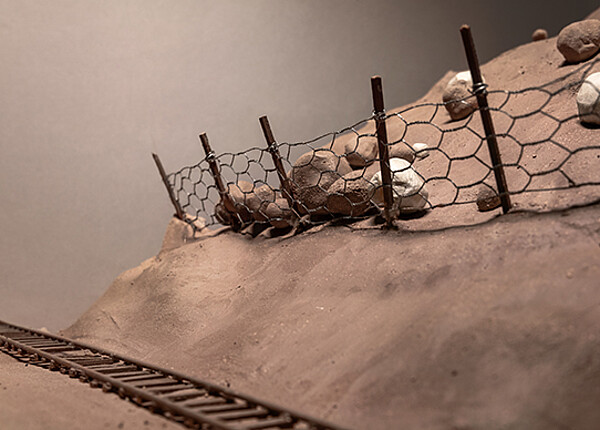Landslides and hillslope debris flows occur everywhere in Switzerland. Nationally, however, they are not among the biggest causes of damage. However, they can be very drastic locally, such as in 1994 in Falli-Hölli, Fribourg, when an entire holiday home settlement with 37 houses was swept away and destroyed by a landslide.

Depending on the depth of the sliding surface, landslides are labelled as shallow, medium or deep. A distinction is also made as to whether they move permanently or spontaneously. If the landslide mass is pulpy with a high water content, it is referred to as a hillslope debris flow.
In contrast to hillslope debris flows, debris flows are not categorised as landslide processes. Debris flows occur in the channel of a watercourse. It is not uncommon for landslides to lead to secondary rockfall from the landslide mass.
Effects of climate change
Climate change leads to landslides
As a result of climate change, heavy rainfall is becoming more frequent and more intense. The soils on slopes are becoming saturated and can increasingly lead to shallow to medium landslides and hillslope debris flows. In addition, the retreat of the glaciers leads to more unstable slopes. One example of this is the large Moosfluh landslide in the Aletsch region (VS), where the slope slides up to 30 metres per year due to glacier retreat.
Monitoring and protective measures
Monitoring and protective measures
The damage caused by landslides has been reduced in recent years by means of various measures. These include hazard maps, monitoring (as in Moosfluh, Aletsch) or targeted structural protection measures (such as dams or drainage). Adapted construction methods and, last but not least, evacuation and resettlement orders also help to minimise damage.
Effective measures
Effective measures
With their spatial planning instruments and authorisation practices, the cantons and municipalities make a significant contribution to reducing the risks posed by landslides. Owners can protect themselves and their buildings with hazard-adapted construction methods. Examples of measures include
Technical measures
- Constructing buildings and facilities using robust construction methods
- Collect and drain surface water in a controlled manner
- Build drainage systems, open drainage ditches and tunnels
- Construct protective structures such as slope debris networks, slope stabilisation or protective dams
- Maintain and repair existing protective structures
- Keep the drainage corridors of watercourses in landslide areas clear
Risk communication in Brienz (GR)
Thanks to permanent monitoring and an ordered evacuation, there was no disaster in the municipality of Albula. The existing uncertainties in the development were communicated transparently. The municipality and the canton provided comprehensive information to those affected on an ongoing basis.


![[Translate to Englisch:] Campo (Vallemaggia) TI, Südansicht der Rutschung Aroina Frana mit Rovana, Campo, Südhang und z. T. Pizzo Bombögn Large landslide on a mountainside in Vallemaggia with scattered houses on the upper level and forest in the background.](/fileadmin/B_NG_Risiken/Rutschung/Dia_303-00587.jpg)
![[Translate to Englisch:] Plasselb FR, Abgerutschte Ferienhaussiedlung Falli-Hölli südlich von Plasselb Collapsed house roof in a landslide area in Plasselb FR, surrounded by trees and muddy water.](/fileadmin/B_NG_Risiken/Rutschung/Dia_303-35735.jpg)

![[Translate to Englisch:] Entlebuch, Rutschung Feldweid, Unwetter Aerial view of a mountain meadow with several buildings and a large landslide area, surrounded by forest.](/fileadmin/B_NG_Risiken/Rutschung/AIC_02-0W-059952-001.jpg)
![[Translate to Englisch:] Brienz/Brinzauls GR, In der Rutschung Igl Rutsch im Südhang oberhalb Brienz Rocky and debris-covered slope with scattered trees under blue sky at the Brienz GR landslide area.](/fileadmin/B_NG_Risiken/Rutschung/Dia_303-01195.jpg)
![[Translate to Englisch:] Debris Flow, Schwanden, Canton of Glarus, Switzerland Landslide with exposed soil on a forested mountainside above a grassy area with scattered houses.](/fileadmin/B_NG_Risiken/Rutschung/Murgang_September_2023__Schwanden_GL_20230911-jag9889.jpg)

